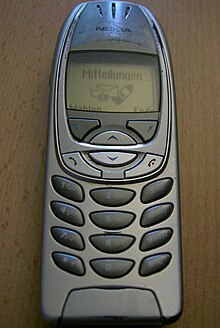A ringtone is the sound made by a telephone to indicate an incoming telephone call. Originally referring to the sound of electromechanical striking of bells or gongs, the term refers to any sound by any device alerting of an incoming call.
The Nokia 7250 is a mobile phone handset manufactured by Nokia. Announced in 2002 and released for sale in February 2003, it was designed at Nokia Design Center in California, by the Bulgarian-American designer Miki Mehandjiysky. The Nokia 7250 is notable for its unconventional design, striking colours and integrated digital camera, and also had Xpress-On covers. It was the successor of Nokia 7210.

The Nokia 3510 is a mobile phone for the GSM network, introduced by Nokia on 12 March 2002. The phone was the first Nokia phone to bring GPRS internet services to the mass market. It was also the first Nokia phone to ship with Beatnik's miniBAE engine, allowing for playback of polyphonic ringtones.
The Nokia 3310 is a discontinued GSM mobile phone announced on 1 September 2000, and released in the fourth quarter of the year, replacing the popular Nokia 3210. It sold very well, being one of the most successful phones, with 126 million units sold worldwide, and being one of Nokia's most iconic devices. The phone is still widely acclaimed and has gained a cult status due to its reputation for durability.
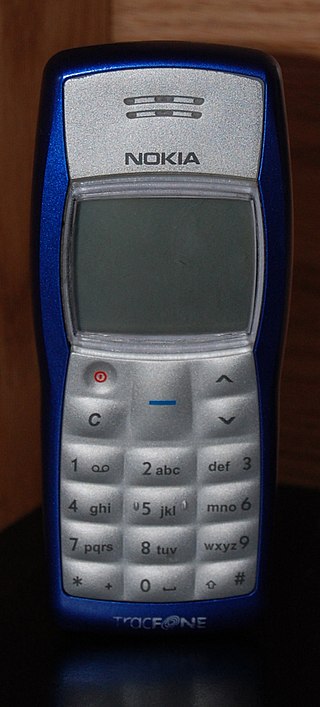
The Nokia 1100 is a basic GSM mobile phone produced by Nokia. Over 250 million 1100s have been sold since its launch in late 2003, making it the world's best selling phone handset and the best selling consumer electronics device in the world at the time. The model was announced on 27 August 2003 and was discontinued in September 2009.
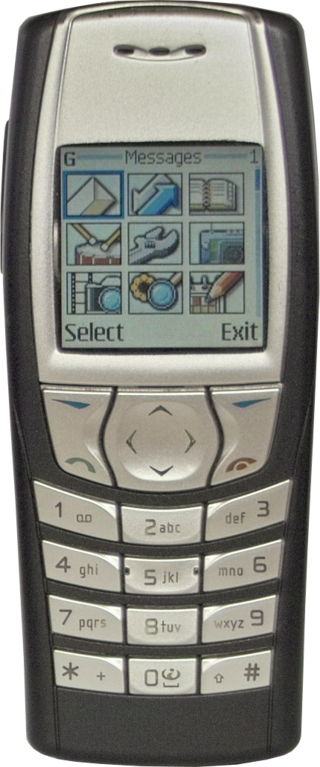
The Nokia 6610 is a handset by Nokia that uses the Series 40 platform and J2ME (Java). The device features text and picture messaging, a WAP browser, Stereo FM radio, Polyphonic ringtones and a 128x128, 4096-colour display. It is essentially the same phone feature-wise as the Nokia 7210, the 6610 being a more business-oriented version with a more conservatively-styled face plate and keypad layout, in contrast with the fashion-oriented 7210. It was introduced at CommunicAsia in June 2002 and was released in Q3 of the year.
The Nokia tune is a phrase from a composition for solo guitar, Gran Vals, composed in 1902 by the Spanish classical guitarist and composer Francisco Tárrega. It has been associated with Finnish corporation Nokia since the 1990s, becoming the first identifiable musical ringtone on a mobile phone; Nokia selected an excerpt to be used as its default ringtone.

The Nokia 7600 is a camera phone developed by Nokia, running on Series 40. The 7600 was announced on 25 September 2003 and was Nokia's second 3G handset after the Nokia 6650. It is notable for its unique radical design.
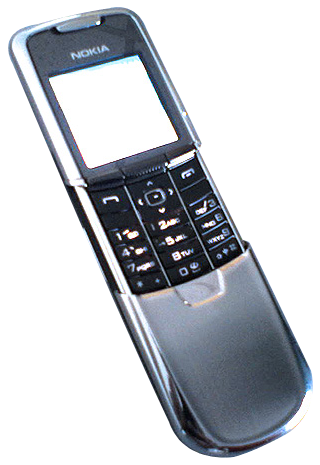
The Nokia 8800 is a luxury mobile phone produced by Nokia, based on the Nokia Series 40 operating system. The 8800 features a stainless-steel housing with a scratch-resistant screen and has a weight of 134 grams. According to Nokia, the 8800's "sophisticated slide mechanism uses premium ball bearings crafted by the makers of bearings used in high performance cars".

The Nokia 6300 is a mobile telephone handset produced by Nokia. It was announced on 28 November 2006 and released in January 2007. This model was assembled in several factories, including Jucu plant, near Cluj, in Romania.

The Nokia 6310i is a mobile phone from Nokia first introduced at the CeBIT fair in March 2002 with sales starting later that year and discontinued in late 2005, it was Nokia's first tri-band phone offering. Primarily marketed as a business phone, it was for some years the dominant GSM device in the corporate world. The device was most commonly offered in Two-tone Silver/Grey or Two-tone Gold/Black trim; the third option, a Copper coloured variant, was much rarer.
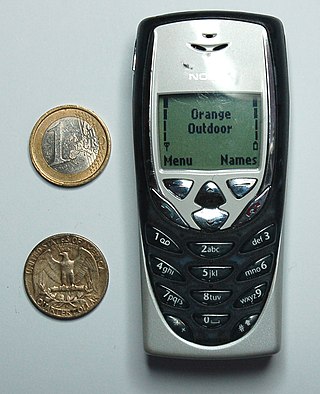
The Nokia 8310 is a mobile phone manufactured by Nokia between 2001 and 2002. Belonging to the 8000 series, the handset was a member of Nokia's flagship premium 'candybar' variety, and retailed for a price in excess of £400 on launch after its announcement at CEBIT in March 2001. Incorporating Nokia's trademark menu system and GUI with a white backlight, the device was easy to operate, yet contained advanced premium features not normally found on handsets of the time, such as infrared, a fully functional calendar, and was the first Nokia phone to support GPRS and an FM Radio. It was also the lightest Nokia phone to feature a polyphonic startup sound, despite not having polyphonic ringtones built into the phone, possibly due to the muffled sound.

The Nokia 1112 is a low-end GSM mobile phone sold by Nokia. The 1112 was released in 2006.
The Nokia 6010 is an entry-level mobile phone with a Nokia Series 40 96 × 65 color user interface. It was released in 2004 and is compatible with the GSM-850 and GSM-1900 networks in North America.
Space Impact is a mobile game series that was published by Nokia and its games usually came bundled with several Nokia devices.
The Nokia 8810 is a discontinued slider-style mobile phone announced and manufactured by Nokia in 1998. It is notable for being among the first mainstream mobile devices to have an internal antenna, although the first is regarded as the TCP-6000, released as the Hagenuk GlobalHandy.
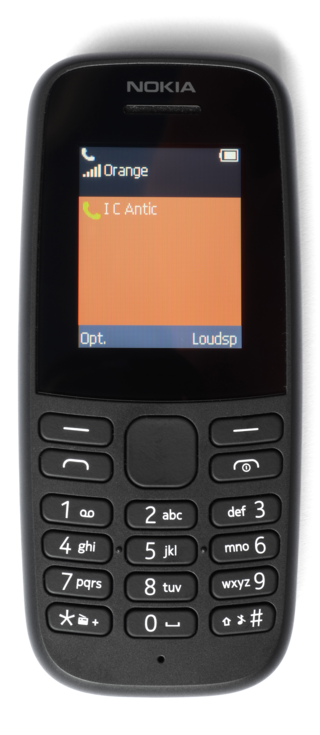
Nokia Series 30+ is a software platform and application user interface used for Nokia-branded mobile devices. The platform was introduced by Nokia in September 2013, first appearing on the Nokia 108, and has been the main Nokia feature phone operating system after the end of the Series 30 and Series 40 platforms in 2014. Despite the similar name and user interface, S30+ is technically completely different and unrelated to S30.

Human Mobile Devices (HMD), formally HMD Global, is a Finnish mobile phone manufacturer. The company is made up of the mobile phone business that the Nokia Corporation sold to Microsoft in 2014, then bought back in 2016. HMD began marketing Nokia-branded smartphones and feature phones on 1 December 2016. The company has exclusive rights to the Nokia brand for mobile phones through a licensing agreement. The HMD brand was initially only used for corporate purposes and does not appear in advertising, whereas the name "Nokia Mobile" is used on social media. As it was launched, the acronym HMD stood for Hon Hai Mobile Devices. This was in reference to the main shareholder at the time of its creation: the Taiwanese group Foxconn. In January 2024, HMD rebranded to 'Human Mobile Devices', and will use their own branding on future devices alongside that of Nokia.

Beatnik, Inc., founded as Headspace, Inc., was a company that specialized in interactive audio technology. It was founded by musician Thomas Dolby in 1993 along with co-founder Mary Coller. It is best known for its Beatnik technology, which was used to provide sound in small file sizes on websites and later in billions of phones during the 2000s to play polyphonic ringtones, with its key clients being Nokia, Sony Ericsson, Samsung, and various other manufacturers. During its earlier years it also produced music for video games such as Cyberia and Obsidian.
